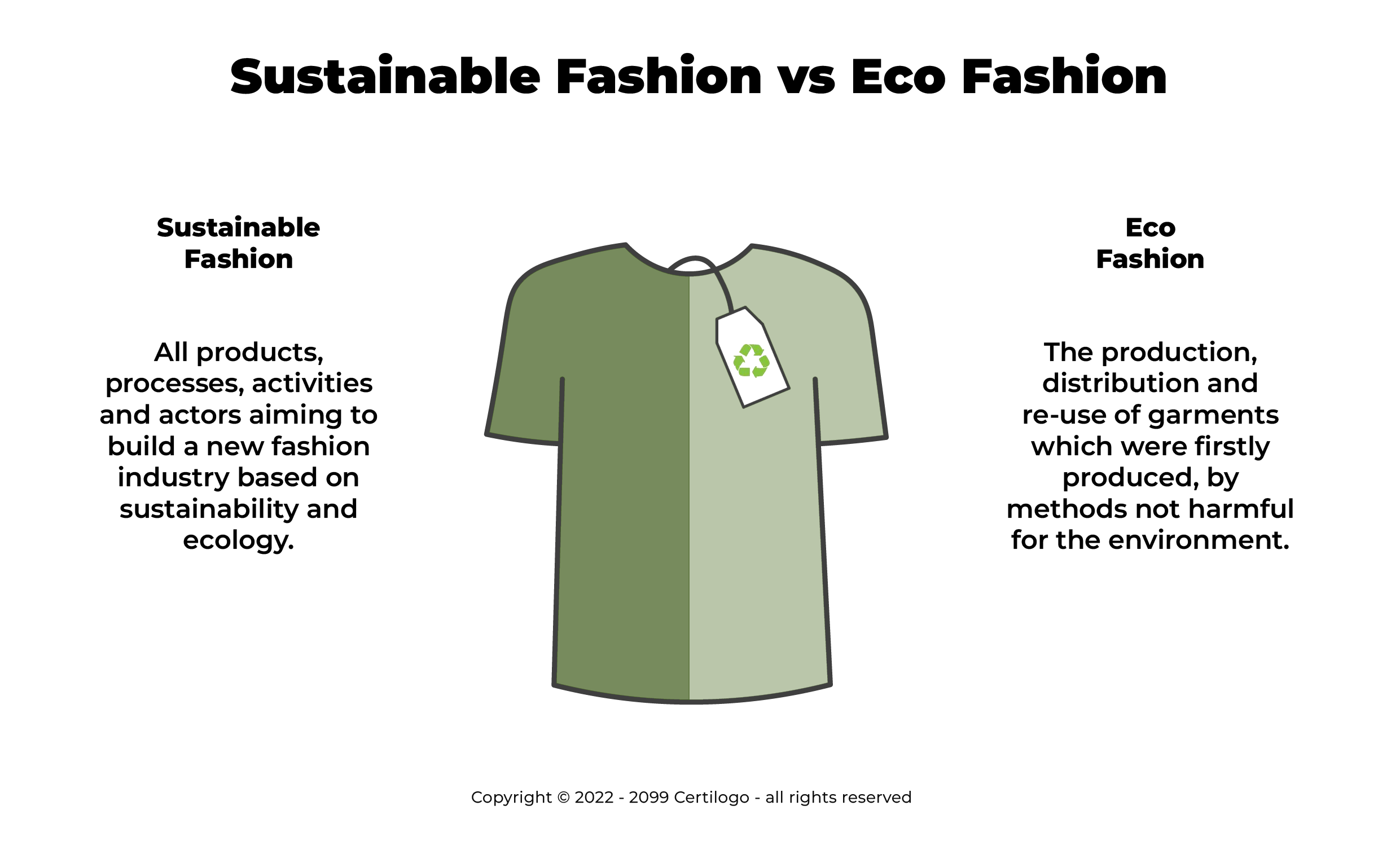Find Cape Town Sustainable Fashion Boutiques as well as Brands
Find Cape Town Sustainable Fashion Boutiques as well as Brands
Blog Article
Stay Ahead of the Curve by Discovering Cutting-edge Fashion Fads
In a sector as dynamic as style, remaining ahead involves even more than simply adhering to existing fads-- it demands an expedition of advancement. Smart textiles, for example, are changing garments into practical work of arts, while 3D printing is reinventing design procedures with its customizable, waste-reducing capacities. As sustainability ends up being a cornerstone, technologies like eco-friendly products and circular style methods are reshaping ecological responsibility - Cape Town Sustainable Fashion. Moreover, the convergence of innovation and fashion heralds a brand-new period of customer interaction. How, after that, can these emerging patterns redefine the future of style, and what effects do they hold for brand names looking for to thrive in this developing landscape?

Embracing Smart Textiles
In the last few years, the garment industry has witnessed a transformative shift with the integration of smart fabrics, an innovative innovation that blends modern technology with material. This development stands for not just a blend of aesthetic appeals and performance yet likewise a considerable jump towards sustainability and customization in fashion. Smart fabrics, also referred to as e-textiles, installed sophisticated electronics such as sensing units and conductive strings within the textile, making it possible for garments to connect with the environment or the user.
These fabrics are designed to check physiological criteria, such as heart rate or body temperature level, giving real-time health analytics. Beyond health applications, smart fabrics are also being used for flexible clothing, which can change shade or pattern in feedback to ecological stimulations, thus providing a dynamic fashion experience.
Additionally, the growth of energy-harvesting fabrics that create power from activity or sunshine is leading the way for self-sufficient wearable innovation. This development is interesting environmentally aware consumers and designers intending to lower the ecological impact of style. As r & d in this field breakthrough, smart textiles are expected to become progressively prevalent, reshaping the landscape of modern fashion with their multifunctional abilities.
The Rise of 3D Printing
Reinventing the manufacturing landscape, 3D printing has arised as a game-changer in the apparel industry. This sophisticated technology has actually made it possible for designers to push the limits of creativity, creating elaborate and customized garments that were formerly unthinkable. By leveraging digital style and additive manufacturing, 3D printing helps with the creation of intricate geometries and patterns, allowing designers to experiment with brand-new structures and frameworks.
A noteworthy benefit of 3D printing in fashion is its capability to produce on-demand, minimizing waste and minimizing stock needs. This efficiency not only optimizes manufacturing processes yet also enables quick prototyping, making it possible for developers to bring their visions to life in a shorter timeframe. Additionally, 3D printing sustains customization to a level unmatched by conventional techniques, using individualized fits and distinct layouts tailored to private customer choices.
The surge of 3D printing has likewise equalized fashion, making it accessible to emerging developers that can now fabricate high-quality pieces without considerable economic investment in conventional manufacturing framework. As modern technology proceeds to breakthrough, the fashion business is positioned to harness the complete capacity of 3D printing, checking out brand-new materials and techniques that will definitely redefine how style is conceived and generated.
Lasting Style Innovations
As the fashion business faces journalism need for environmental responsibility, sustainable style technologies have actually arised at the leading edge of transformative modification. The growing recognition of eco-friendly impact has actually sustained a change in the direction of more eco-conscious practices and products. Developers and brand names are currently prioritizing sustainability, including techniques that minimize waste and decrease carbon footprints.
One significant development is the increase of circular style, which stresses recycling and upcycling to prolong the lifecycle of garments. This method not just minimizes waste yet additionally this contact form urges consumers to adopt a more mindful technique to garments usage.
An additional breakthrough depends on the fostering of ingenious dyeing methods that use all-natural dyes or waterless procedures, therefore lowering the large amounts of water and chemicals traditionally used in fabric dyeing. Additionally, advancements in biotechnology have actually brought about the development of lab-grown natural leather and materials, offering cruelty-free and ecologically pleasant alternatives to conventional products. Through these pioneering initiatives, the style sector is making significant strides towards Recommended Reading an extra lasting future.

Tech-Integrated Garments
Tech-integrated garments represents an innovative blend of fashion and technology, reshaping just how people engage with their clothing. This cutting-edge domain is marked by the incorporation of smart fabrics and embedded electronic elements, improving both functionality and visual appeal. From physical fitness trackers embedded in sports apparel to heated jackets controlled through smart device applications, tech-integrated clothing offers customers extraordinary ease and flexibility.
Pioneering brand names are driving this fad, concentrating on creating garments that react to ecological stimulations or user commands. For circumstances, some garments can change color or pattern in response to temperature level shifts, while others integrate biometric sensors to keep track of health metrics like heart rate or anxiety degrees. The smooth combination of technology right into textiles additionally includes environmental sustainability, with efforts to establish self-cleaning textiles or garments that get used to weather, hence reducing the requirement for several layers.
Moreover, the development of wearable innovation is not simply restricted to garments however includes accessories like watches and eyeglasses, additional widening the scope of tech-integrated fashion. As the sector remains to innovate, the potential for modification and customization in garments grows, supplying customers unique, tech-enhanced style experiences that provide to their individual needs and preferences.
Future of Virtual Style
In recent years, the future of virtual fashion has emerged as a transformative pressure within the industry, leveraging developments in digital technology to redefine just how fashion is produced, experienced, and consumed. By integrating augmented fact (AR), virtual reality (VR), and 3D style devices, designers can currently craft immersive and interactive experiences that transcend standard fashion borders. Virtual style enables the production of garments that exist only in electronic environments, supplying countless possibilities for innovation without the constraints of physical production.
This digital shift not only provides opportunities for imaginative expression yet additionally addresses sustainability problems fundamental in conventional style techniques. Cape Town Sustainable Fashion. By eliminating the need for physical sources, digital style minimizes waste and reduces carbon footprints. Moreover, the rise of virtual fashion aligns with the raising consumer demand for unique and personalized experiences, as digital garments can be tailored and tailored to specific choices with ease

Verdict
The fashion industry's future lies in the integration of sustainable techniques and cutting-edge technologies - Cape Town Sustainable Fashion. Smart fabrics and tech-integrated clothing are boosting performance, while 3D printing uses opportunities for customization and waste reduction. Lasting style, through circular methods and environment-friendly materials, demonstrates a dedication to environmental stewardship. Additionally, digital style is positioned to redefine customer interactions. Adapting to these trends is crucial for brands looking for to stay competitive and pertinent in this quickly progressing landscape.
In recent years, the style industry has actually experienced a transformative change with the combination of clever fabrics, an advanced technology that mixes technology with fabric.As the style market grapples with the pressing need for environmental duty, sustainable fashion technologies have actually emerged at the leading edge of transformative adjustment.In recent years, the future of digital style has actually emerged as a transformative force within the industry, leveraging developments in digital technology to redefine exactly how style is produced, experienced, and eaten. The rise of digital style lines up with the raising customer demand for tailored and distinct experiences, as virtual garments can be customized and tailored to specific preferences with simplicity.
The fashion market's future lies in the combination of ingenious modern technologies and lasting practices.
Report this page